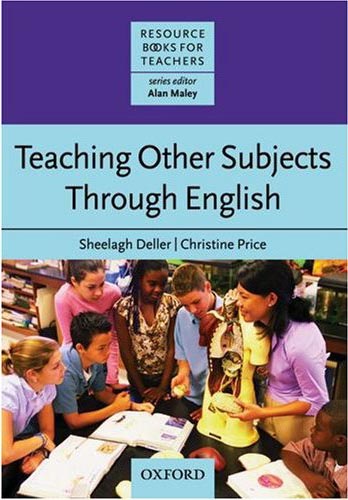Is this book from Oxford University Press appropriate for a wide range of age groups and reading levels? Does it offer practical, applicable activities? Find out in Stefka Kitanova's assessment of the book.
 |
Introduction to the book: Teaching Other Subjects Through English, by Sheelagh Deller and Christine Price (OUP, 2007)
'Book of recipes' could be a second title for this book. Why would I name it 'Book of recipes'? Well, in each chapter there are 'recipes' of activities given with instructions of the sequence and procedure to follow. The book consists of seven chapters with activities for subjects taught in English plus information about the authors, their idea who the book is for and instructions on how to use it. The chapters with activities cover 'giving new information', 'teaching and activating vocabulary' 'speaking', 'writing', 'consolidation and revision', 'using supplementary resources' and 'project work'.
Subject areas
The subjects covered are Maths, Biology, Chemistry, Physics, Environmental studies, Food technology, History, Geography, Literature, Sports science, Physical education, Art, Music, ICT, Business studies, Design and technology, Religious studies, and Personal, social and health education (PSHE), probably following the UK educational system. In some places different names are used e.g. Science, and, in my opinion, in some cases subject content does not coincide with the subject area mentioned e.g. Bacteria in Food technology, which seems a better fit for Biology.
Organisation
Each activity is structured in a similar way which is easy to use and gives an algorithm for use. The sections are aims, materials, demo subject, alternative subjects, preparation, procedure, comments (if any), variation(s) (if any), and follow up (if any).
At the end of the book there are language support appendices for the teacher and the students, and useful websites and sources.
What I like about the book
What I like about the book is its fresh ideas for activities. They cover nearly all language skills and meet many of the competencies students have to develop during their studies of subjects taught in English. The aims are split into language aims and other aims. The other good thing is that all the activities are adaptable for other languages. The authors also give ideas and suggestions for how and when the mother tongue could be used. Most of the activities seem applicable in cases where the subjects are taught in the home language/mother tongue.
Things to develop for the next edition
The book is written with students aged 11-18 in mind, which means a variety of language levels and thinking skills. Although the activities are adaptable, it could be useful to mention in each activity which age it is suitable for just for orientation, or to divide activities for students aged 11-14 and 15-18. The language level is not mentioned, as each teacher could choose texts suitable for the level of her/his students.
In some cases the authors rely on the good language skills of the reader and the description of activities are a bit complicated (at least for non-natives like me). There are also some demo topics repeated several times e.g. human skeleton. On one hand, it is a good idea to give different activities/approaches for one and the same topic; on the other, it could be more useful to cover as many topics as possible.
To sum up...
To sum up, when I read such books I usually make my decision whether or not 'it is a good one or not a good one' if I find in it something practical and immediately applicable. And so I may say, this book is a good one!

No comments yet